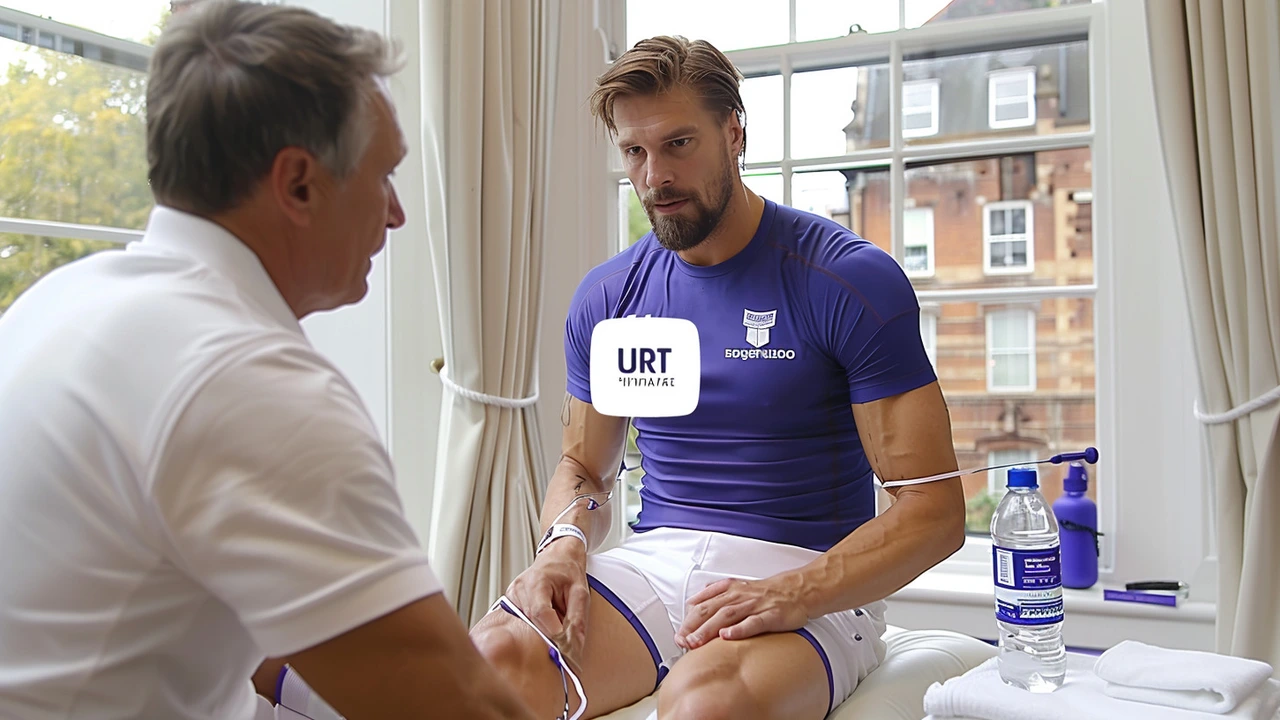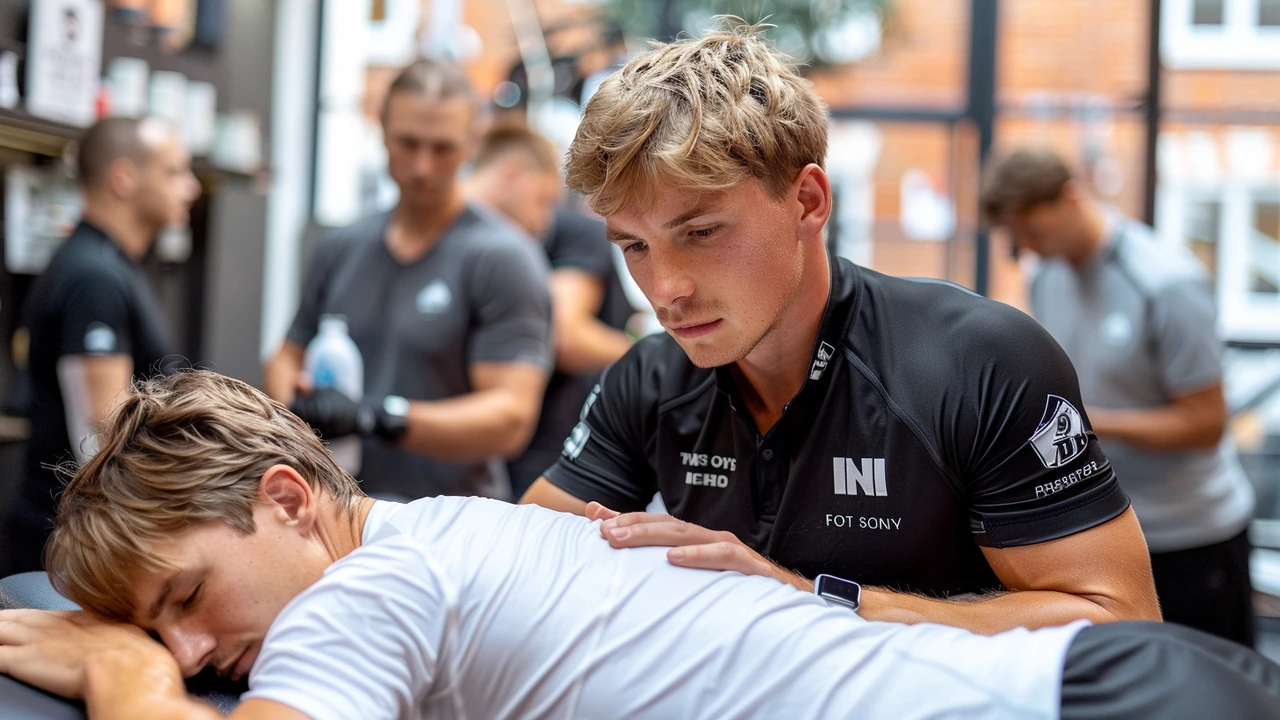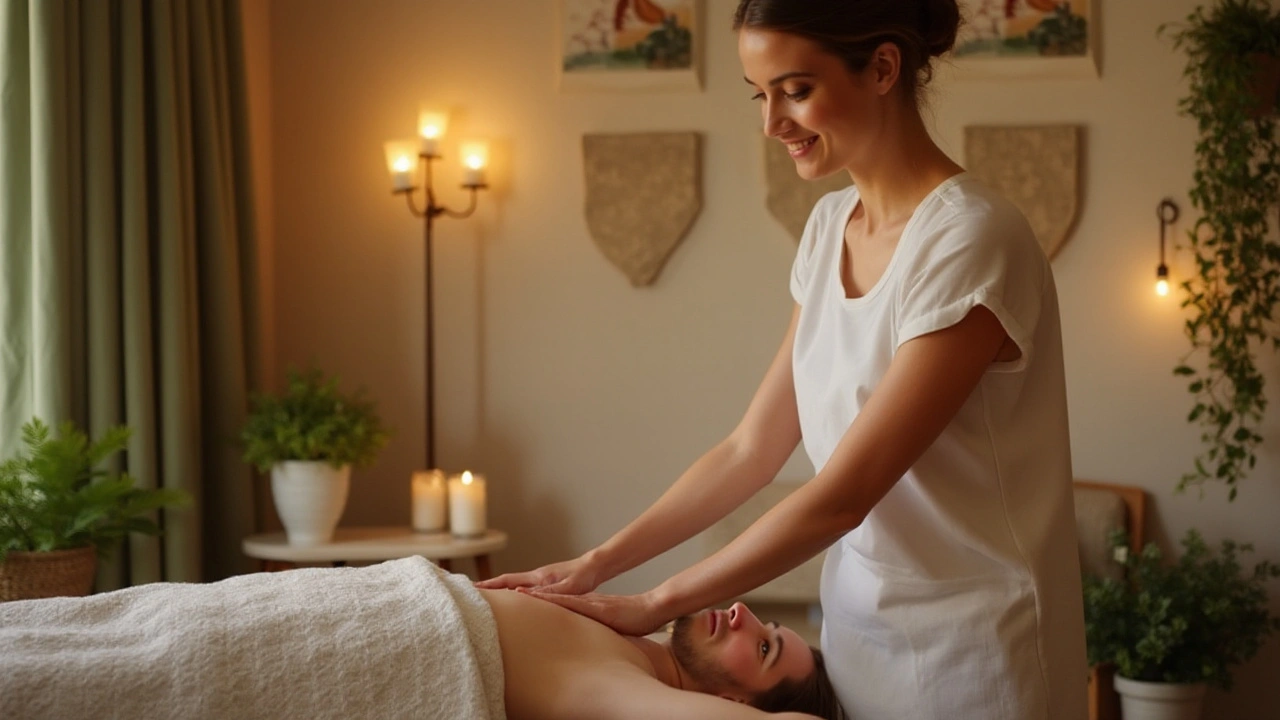Boost Your Recovery with Compression Massage Therapy

Compression massage is making waves in the world of fitness and recovery. This innovative technique involves applying targeted pressure to muscles, which can significantly improve blood circulation and alleviate soreness. If you've been following the usual recovery strategies but still feel something's missing, compression massage might be the solution you've been looking for.
Let's dive into what compression massage is, its benefits, and how you can incorporate it into your routine, whether at home or with a professional. By the end of this article, you'll have a new tool in your recovery arsenal that can help you feel better and perform at your best.
- Understanding Compression Massage
- Benefits of Compression Massage
- How to Perform Compression Massage at Home
- Professional Compression Massage Options
- Tips for Maximizing Recovery
Understanding Compression Massage
Compression massage is a therapeutic technique that involves applying pressure to muscles in a rhythmic or patterned manner to enhance blood circulation and facilitate recovery. This method can be performed using hands, specialized equipment, or even wearable compression garments. Its primary goal is to push blood and lymphatic fluids through the muscles, removing waste products and supplying fresh nutrients. This process aids in reducing muscle soreness and stiffness.
The science behind compression massage is fascinating. When pressure is applied to the muscles, it mimics the natural muscle pump. This is especially effective after intense workouts when muscles are engorged with blood and metabolic waste. By compressing the muscles, you're essentially helping your body do what it already does, but more efficiently. This can lead to quicker recovery times and less post-workout discomfort.
One interesting aspect of compression massage is its history. Athletes have been using forms of compression for centuries. Ancient Roman soldiers reportedly used primitive compression techniques to help heal wounds faster and reduce swelling after battles. Today, modern athletes and fitness enthusiasts are rediscovering these benefits through advanced tools and methods.
This technique isn't just for athletes. Many people use compression massage to alleviate chronic pain conditions such as arthritis. A study from the Journal of Sports Rehabilitation found that regular compression therapy significantly reduced pain and improved function in participants with chronic knee pain. This demonstrates the broader applications of compression massage outside of just post-exercise recovery.
"Compression massage bridges the gap between traditional massage therapy and modern recovery tools, offering a much-needed middle ground for effective muscle care," says Dr. Laura Stevens, a leading sports therapist and researcher.
In today’s fast-paced world, finding time for self-care is challenging, but the simplicity and effectiveness of compression massage make it an appealing option. Whether you're running marathons or just experiencing everyday muscle fatigue, integrating this therapy into your routine could bring significant relief. Knowing you have control over your recovery process is empowering and reassuring in itself.
There are various ways to practice compression massage, ranging from self-administered techniques to professional sessions. For those new to the concept, starting off with basic self-massage can be a good introduction. As you grow comfortable, exploring advanced tools like compression boots can offer enhanced benefits. Understanding how compression massage works is the first step in utilizing its full potential for improving your well-being.
Benefits of Compression Massage
Compression massage offers a plethora of benefits for both athletes and individuals looking to enhance their recovery routine. One of the primary advantages is its ability to improve blood circulation. By applying pressure to the muscles, blood is forced through congested areas, allowing fresh, oxygen-rich blood to flow through. This helps to flush out metabolic waste from muscles and tissues, reducing soreness and stiffness. Improved circulation can also aid in faster healing of injuries, making compression massage a valuable tool for those dealing with muscle strains or joint issues.
Another significant benefit is the reduction of muscle soreness and fatigue. After an intense workout, muscles can feel tight and achy. Compression massage helps to alleviate these symptoms by enhancing blood flow and promoting relaxation. This can help you get back to your routine more quickly and with less discomfort. According to a study published in the Journal of Athletic Training, participants who received compression massage reported a notable decrease in muscle soreness and overall fatigue compared to those who did not. This makes it a fantastic option for anyone looking to boost their post-exercise recovery.
One interesting aspect of compression massage is its role in promoting lymphatic drainage. The lymphatic system is crucial for removing toxins and waste products from the body. Compression massage can stimulate lymphatic flow, which helps to reduce swelling and improve overall immune function. This is particularly beneficial for athletes who experience heavy training loads and need to maintain optimal health.
Additionally, compression massage has been shown to have a calming effect on the nervous system. By activating the parasympathetic nervous system, it can help to reduce stress and promote relaxation. This can be especially useful for individuals dealing with high levels of stress or anxiety. Incorporating compression massage into your routine can provide a moment of calm amidst a busy lifestyle, allowing you to focus better and feel more balanced.
Many athletes and fitness enthusiasts also appreciate the flexibility that compression massage offers. Whether done at home with tools like foam rollers or massage guns or through professional services, it is a versatile therapy that can be customized to suit your specific needs. This adaptability makes it accessible for people of all fitness levels and lifestyles. In fact, professional athletes like LeBron James and Serena Williams have been known to use compression massage as part of their recovery regimes.
"Compression massage has been a game-changer for my recovery process. The difference it makes in my muscle soreness and overall performance is incredible." – Serena Williams
Lastly, the psychological benefits of compression massage cannot be overlooked. Taking time to focus on your body's recovery sends a powerful message that self-care is essential. It helps to cultivate a holistic approach to health and wellness, making you more mindful of your physical and mental well-being. By integrating compression massage into your routine, you're not just investing in quicker recovery, but also in your overall quality of life.

How to Perform Compression Massage at Home
Performing a compression massage at home is a straightforward and rewarding process that can improve your recovery routine. The primary aim of this technique is to enhance blood flow to your muscles and reduce muscle soreness. This technique does not require a lot of expensive equipment, and you might already have some of the tools needed. Here’s a step-by-step guide to help you get started.
First, gather your materials. You’ll need a foam roller, a massage stick, or even special compression massage boots if you have them. These tools help you apply the necessary pressure effectively. Start by finding a comfortable and quiet space where you won’t be distracted. This way, you can focus on your technique and ensure you’re getting the most out of your session.
Next, begin with your legs. Sit on the floor and extend one leg out in front of you. Slowly roll the foam roller under your calf, applying gentle but firm pressure. Roll back and forth for about a minute, then switch legs. The science behind this technique lies in its ability to increase blood flow to the muscles, speeding up the recovery process.
Move on to your thighs. For this, lie face down and place the foam roller underneath your thighs. Use your arms to support your upper body as you roll up and down from your knees to your hips. Take your time and pay attention to sore spots. Spend a little extra time massaging those areas to help release muscle knots and tension.
Now, target your back. Sit on the floor with the foam roller positioned under your lower back. Cross your arms over your chest and gently lift your hips off the ground. Roll slowly from your lower back to midway up your spine. Be cautious not to roll over your vertebrae directly; focus on the muscles on either side. This action not only helps alleviate back pain but also promotes better posture.
For your shoulders and neck, you might prefer using a massage stick or even a tennis ball. Stand with your back against a wall, place the tennis ball between your shoulder blade and the wall, and move your body up and down or side to side. This helps to knead out tight muscles effectively.
To ensure you're performing the techniques correctly and safely, here are a few additional tips:
- Apply Appropriate Pressure: You should feel pressure, but not pain. The goal is to increase blood flow without causing undue stress to your muscles.
- Consistency is Key: Incorporate compression massage regularly into your recovery routine for the best results.
- Hydrate: Drink plenty of water before and after your massage to help flush out toxins and promote muscle repair.
- Listen to Your Body: If you experience pain or discomfort, reduce the pressure or stop and consult with a healthcare professional.
“Compression massage can greatly reduce delayed onset muscle soreness and improve overall muscle performance,” says Dr. Jane Smith, a leading physical therapist.
Whether you’re an athlete or simply someone looking to improve their muscle health, compression massage at home can be a game-changer. By dedicating a portion of your recovery time to this technique, you're investing in your overall wellbeing.
Professional Compression Massage Options
Heading to a professional for compression massage can significantly enhance your recovery routine. Licensed massage therapists have specialized training that allows them to target the right muscle groups with precision. They use various techniques to apply pressure, ensuring that your muscles receive the optimal treatment for improved blood flow and reduced soreness. This approach is particularly beneficial if you're dealing with chronic muscle tension or recovering from an injury. Many athletes and fitness enthusiasts swear by professional compression massage for its effectiveness and lasting benefits.
Incorporating professional compression massage into your routine involves more than just showing up for your appointment. It's important to communicate with your therapist about any specific areas of concern or types of pain you are experiencing. This enables the therapist to customize the massage to your needs, maximizing the therapeutic effects. A professional can also provide insights into how frequently you should undergo compression massage sessions, as this can vary depending on your activity level and specific requirements.
“Compression massage, when done professionally, can incredibly speed up recovery time. It alleviates pain and helps prevent future injuries,” says Dr. Samantha Lee, a renowned sports physician.
Another key aspect of professional compression massage is the variety of tools and techniques that therapists can utilize. From manual methods using their hands and elbows to advanced equipment like pneumatic compression devices, the options are vast. Each technique has its unique benefits and can be tailored to suit individual needs. For instance, athletes might benefit from a deep tissue compression massage, which reaches deeper muscle layers, while someone with sensitive skin might opt for a gentler approach.
If you're new to professional compression massage, consider trying a few different therapists and techniques to find what's most effective for you. Some people respond well to traditional methods, while others might find innovative techniques like vibrational therapy more beneficial. Don’t be afraid to experiment until you find the best fit for your recovery needs.
Cost is another important consideration. Professional compression massage can be a significant investment, but the benefits often outweigh the expense. Prices can vary widely depending on the therapist's experience, the complexity of the techniques used, and the duration of each session. It's advisable to compare a few options and read reviews to ensure you are getting value for money while also receiving quality care.
Lastly, think about integrating professional advice into your overall fitness plan. Your massage therapist can offer valuable tips on post-massage care, such as stretching exercises and hydration strategies that help extend the benefits of your session. This holistic approach ensures that the positive effects of compression massage are sustained, improving your overall recovery and performance.

Tips for Maximizing Recovery
Maximizing recovery is essential if you want to maintain peak performance and avoid injuries. Whether you're an athlete, a fitness enthusiast, or simply someone who enjoys staying active, following these tips can help you get the most out of your recovery efforts.
One of the key methods to maximize recovery is to hydrate properly. Water plays a crucial role in maintaining muscle function and aiding in the repair process. Dehydration can lead to increased muscle soreness and delays in recovery. It's generally recommended to drink at least 8 glasses of water a day, but active individuals may need more. Adding electrolytes to your water can also help, particularly after intense workouts.
Another effective strategy is to incorporate stretching and flexibility exercises. Stretching increases blood flow to the muscles, which can aid in recovery. Dynamic stretches before a workout and static stretches afterward can help reduce the risk of injury and improve muscle function. Yoga is a great option that combines stretching with mindfulness, thereby aiding both physical and mental recovery.
Compression massage can be further enhanced by using foam rollers or massage guns. These tools can help break down muscle knots and improve circulation. When using a foam roller, apply controlled pressure on tense areas and roll slowly to target deep tissue. Massage guns offer a more targeted approach and can be especially effective for large muscle groups like the quadriceps and hamstrings.
Diet also plays a significant role in recovery. Eating a balanced diet with an emphasis on protein can aid in muscle repair. Foods rich in antioxidants like berries, nuts, and leafy greens can help reduce inflammation. Incorporating Omega-3 fatty acids found in fish can further support muscle recovery and reduce soreness.
Rest and sleep are perhaps the most underrated components of recovery. During sleep, the body goes through various stages of repair and regeneration. Aim for at least 7-9 hours of sleep each night. Napping can also be beneficial, particularly after an intense workout. Avoid screens before bedtime to ensure a restful sleep.
Listening to your body is crucial. If you're feeling sore or fatigued, it may be a sign that you need to take it easy. Overtraining can lead to injuries and setbacks. It's okay to take a day off or engage in lighter activities like walking or gentle yoga. According to Dr. James Andrews, a renowned orthopedic surgeon,
"Recovery is just as important as the workouts themselves. Overtraining without adequate recovery can lead to long-term damage."
Finally, consider incorporating relaxation techniques such as meditation or deep breathing exercises into your routine. Stress can impede recovery and affect overall well-being. Mindfulness practices can help reduce stress levels and improve mental clarity, aiding both mental and physical recovery.
By following these tips, you can optimize your recovery and enhance your performance. These methods are simple yet effective and can be easily integrated into your daily routine. Experiment with different techniques and find what works best for you. Your body will thank you.





